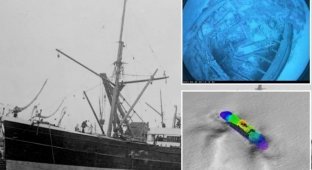133 days in the open ocean. What did the poor Chinese eat and how did he survive after the shipwreck (12 photos)
Poon Lim was a Chinese sailor. In 1942, during World War II, he worked on the British armed merchant ship SS Benlomond, sailing from Cape Town to New York. 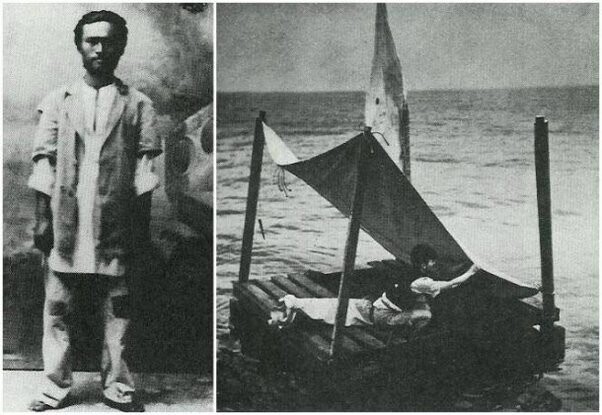
A German submarine attacked and sank this ship. This happened in the Atlantic Ocean, at a distance of 1200 km from the coast of Brazil, approximately opposite the mouth of the Amazon. 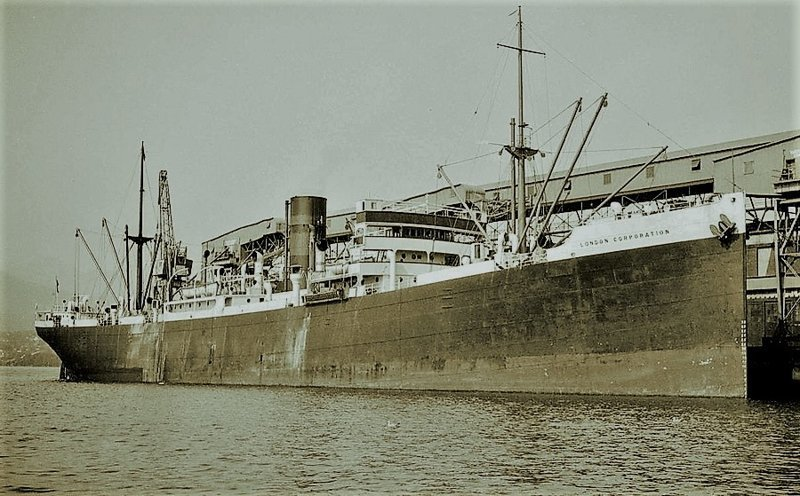
For Great Britain, German submarines were a nightmare - they lost over 4,700 ships during the war. 
The sailor's real name is Pan Lian. But the British remade it in their own way - Poon Lim, otherwise they could not remember it.
The ship immediately began to sink, taking everything with it, including the boat Lim had hoped to sail on.
Besides him, five more people on the raft survived from the ship's crew. But they were discovered by a German submarine. The sailors were interrogated and then sent back to the raft; they soon disappeared from sight.
The sailor hoped that rescuers would arrive at the shipwreck and he would be quickly discovered. But the British had no reason to sail into a dangerous area patrolled by enemy submarines. Moreover, the hopes of saving something or someone from the ship were zero. 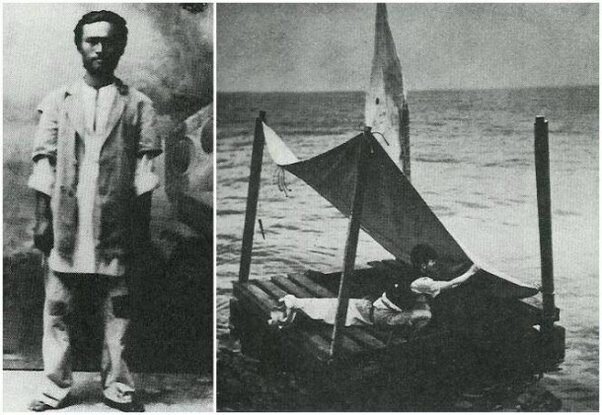
After two hours of sailing around the wreck, Lim found the ship's second life raft. On the ship, in addition to the boats, there were two similar specimens, as it turned out - not in vain! And here he was fantastically lucky. On the raft were several boxes of biscuits, a forty-liter jug of water, some chocolate, a bag of sugar, several flares and a torch. The raft was equipped with an awning so that the sailors could hide from the scorching sun. 
Lim was left alone on the wooden raft, with a small supply of supplies. The width of the raft was only 2.4 meters.
He was also unlucky with the current. He was carried quite far from the shipping route, where he could have been noticed and picked up.
One day a submarine surfaced next to him. She had a strange white and green flag. 
At that time there were not many such flags. Egypt, Saudi Arabia and Garhwal (a small state that then existed in India). But it would be difficult to imagine they had submarines in World War II. 
Egyptian flag from World War II
Another exotic option could be the flag of Saxony. It was located in West Germany. And although Saxony’s separate flag was abolished by the Third Reich, it was popular among the Germans. The flag looked like this:
The people from the submarine went out to smoke. Lim asked to be taken on board, but they only laughed in response and soon went back. The submarine plunged into the abyss again.
The poor traveler spent 133 days at sea completely alone. He also could not purposefully lead the raft to the shore, having become completely dependent on the elements.
When his supplies ran out, he started fishing. Instead of a fishing line, there was a ship's rope, and he made fishing hooks from springs, which just so happened to be inside the flashlight. 
Poon Lim was photographed on a similar ship's raft several years after that unique journey
He tied himself with a rope to the raft and plunged into the water. I was very thirsty, but sea water is a bad help. Of course, there have been brave souls in history who experimented on themselves for the sake of science. I previously wrote about them in the article: How much sea water can you drink and survive.
Fresh water is needed. He obtained it either from rain (he was not spoiled by precipitation during his travels, it rained rarely. Although, maybe it was for the better - there was less risk of capsizing during a storm). Or by squeezing the fish. Marine fish remove excess salt through special cells located in the gills and intestines. Therefore, the liquid inside the fish is desalinated. 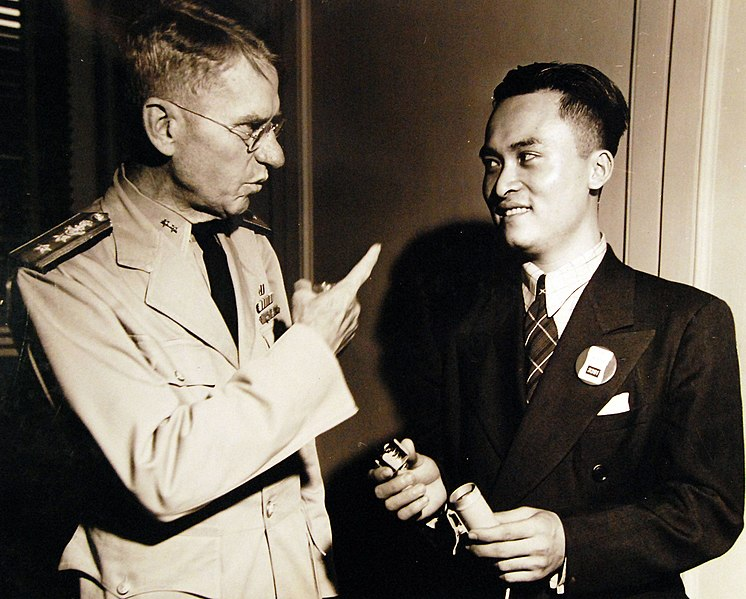
Lim, after his miraculous rescue, talks with American Rear Admiral Julius Fuhrer
He also caught birds and even defeated a shark! He caught a small shark with bait using a rope. He pulled her on board, but she almost bit him. The sailor began to hit her on the head with an iron jug until she froze.
The fins withered in the sun. In China, shark fins are considered a delicacy. 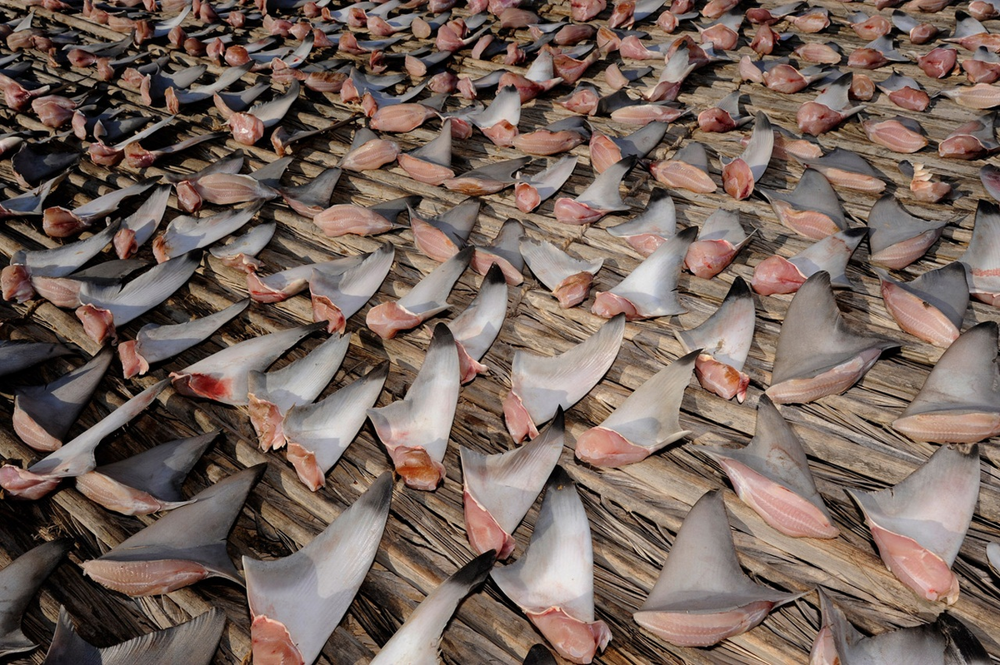
True, they are often eaten not dried, but made from shark fin soup. 
But there’s no time for luxury here!
One day, it seemed that happiness was already close! Lima spotted an American ship from afar. But when I headed towards it, a storm began and the raft with the poor sailor disappeared from sight again.
However, new hope soon appeared. Lim realized that the shore was close. Many seagulls were circling around, and the color of the water began to change. And, indeed, the hope was justified.
In April 1943, Lim spotted the shore. He was discovered by three Brazilian fishermen, who saved the poor fellow. From the appearance of both the sailor and the raft, the fishermen realized that the journey had been long. Although we couldn’t imagine how much!
But they were able to find out the details a month later from the newspapers. After all, Lim did not speak Portuguese, and the fishermen did not know either Chinese or English.
Lee lost 9 kilograms. But, curiously, he was able to walk calmly on his own without support. 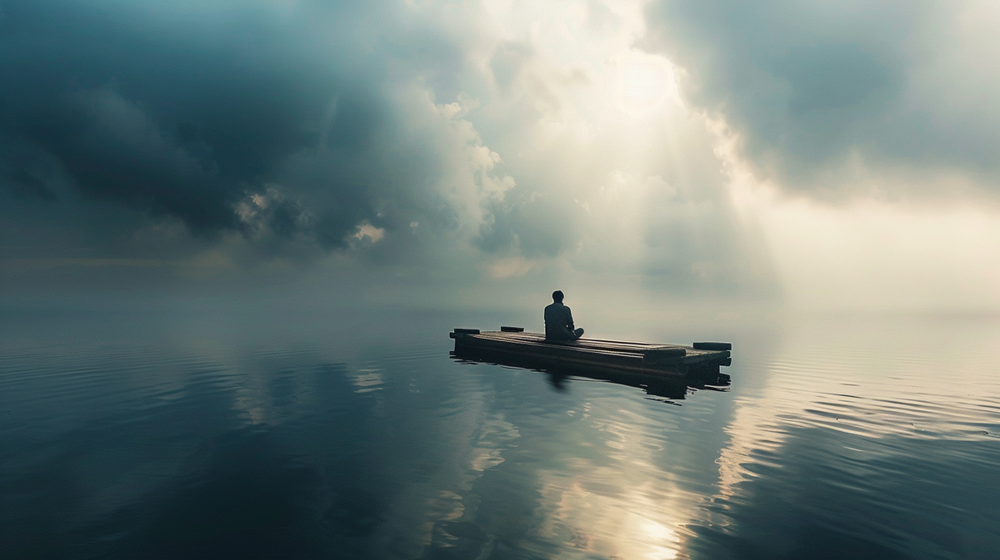
When you come across stories like this, it always inspires me personally. You begin to understand that human capabilities are much wider than we think. And even in the most difficult and seemingly hopeless situations, you should not give up. And if you give up, it’s only to warm the shark with a jug.

















